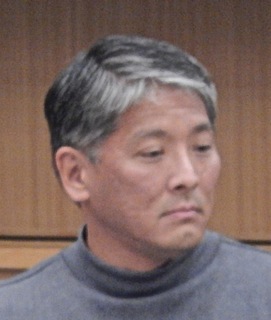Stories from Tohoku
- At July 27, 2016
- By anneblog
- In Annes Letters
 0
0
Dear Family and Friends,
Recently a unique group of film makers came to Sendai. They were special because they were Japanese-Americans. When the March 11, 2011 earthquake hit, like thousands of others worldwide, second and third generation Japanese-Americans felt a strong urge to help. After the 1995 Kobe earthquake, the Japanese American Friendship Association was able to raise $600,000 as aid money. Since the Tohoku disaster was so much larger, the group hoped to get a million dollars. Thanks to extensive TV coverage and the Internet, however, within a few weeks they had raised over four million dollars. That huge outpouring of concern and financial support revealed how deeply connected Japanese-Americans still are to the land of their Asian ancestry.
The Japanese American Friendship Group was so impressed by how well the Tohoku survivors have been dealing with their tragedy that it decided to make a documentary. The result was Stories from Tohoku.

In May 2011, a few weeks after the disaster, Darrell Miho, a photo-journalist who was part of the documentary team, went to Minami Sanriku Cho, in northern Miyagi Prefecture.


Another third generation Japanese-American, Paul Terasaki, is the founder and director of the medically focused Terasaki Foundation in Los Angeles. After 03/11 Dr. Terasaki began offering scholarships to Japanese-American students for a two-week volunteer tour to devastated regions in Tohoku. He wisely knew that direct experience would have a much greater impact than TV images. And indeed, the young people interviewed in Stories from Tohoku all mentioned how much the trip had changed their outlook. “We saw the damage and ongoing suffering. We witnessed the people’s courage and resilience. We realize that fortitude is part of our heritage. We are proud of that. And we also want to help in every way we can.” The Terasaki Foundation is still sending students to this region.
In the USA the documentary has been well received in film festivals in Los Angeles, San Francisco, New York, and Honolulu. Besides documenting the years since the disaster, it also reminds people that the crisis is not yet over. Survivors are still crowded into small temporary housing units. As one example, Imai Sensei of Yomawari homeless group in Sendai told me that one family had so many living in such cramped space that the father opted to become homeless and live on the street in order to allow room for his family in the temporary quarters provided by the government. But with typical “gaman” spirit, local residents say, “We do the best we can. It is not easy, but we get by.”

There was a panel discussion after the showing of the documentary in Sendai. The do-director and co-producer, Dianne Fukami, another co-producer, Debra Nakatomi, and Darrel Miho were there. They told us how meaningful it had been to make the film. And they hoped it would be shown in more places in both Japan and the USA. Of course, they wanted people to continue giving much needed support.

As a closing remark Darrel Miho said, “When I was a kid growing up in America, I never understood what my parents were trying to teach me. It didn’t make sense to me. They stressed “gaman”; that is, never give up, no matter how tough things get. They also never let me complain. And they sternly taught me to always show respect to others.
“When I got to Tohoku and saw how the people were behaving – uniting as a team, helping one another, never complaining, not giving up even if they had lost everything – I suddenly understood what my parents had tried so hard to instill in me. It’s all happening right here. And now I can see and experience its incredible beauty. I guess in a way you could say that coming to Tohoku at this significant time has allowed me to finally come home to myself.

“Whenever I leave this area, people say, ‘Come back and see us. And please don’t forget us.’ I guess that’s the core message of this documentary. Come see for yourself. And never forget those still struggling to survive.”

Love,
Anne



